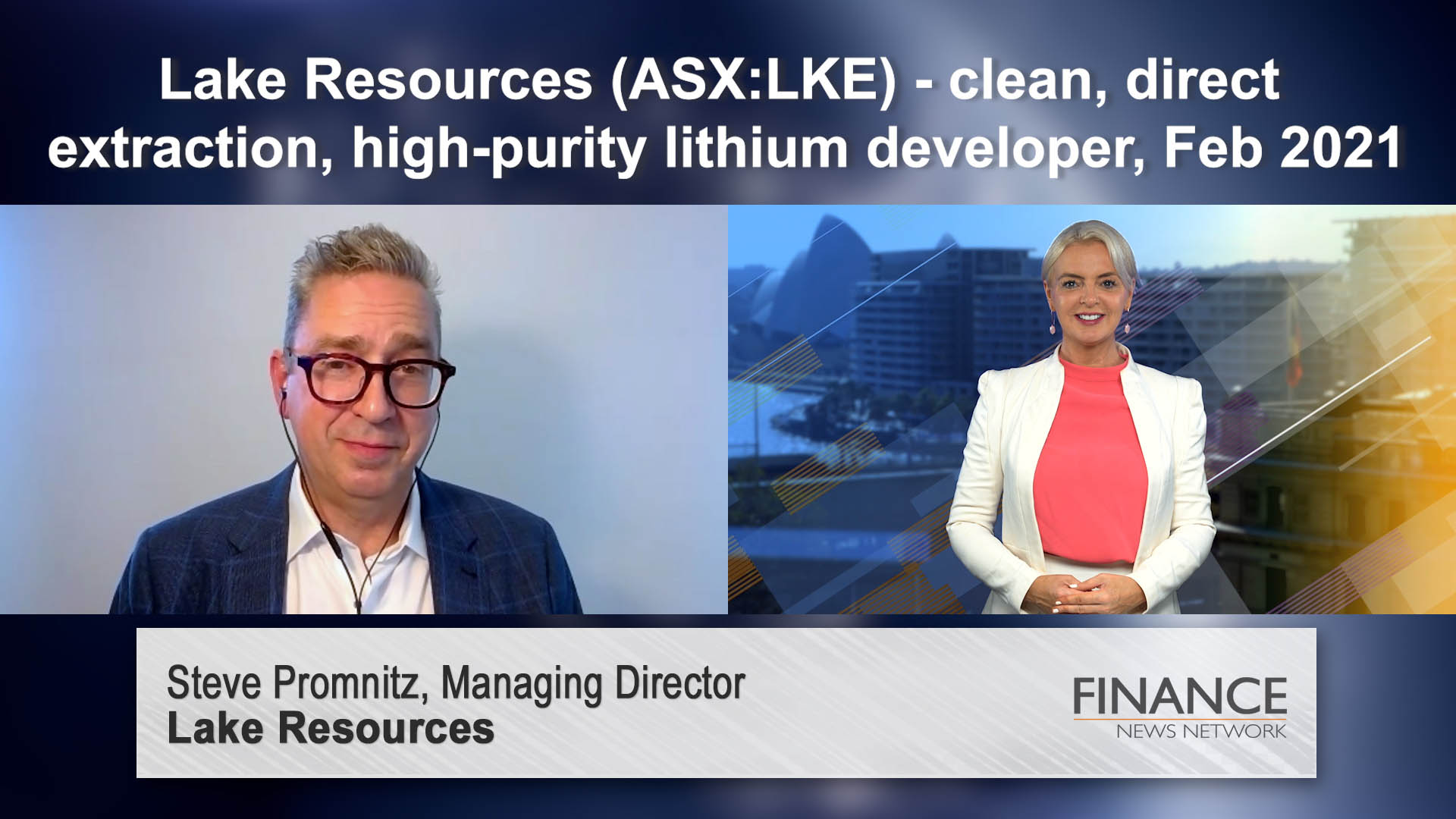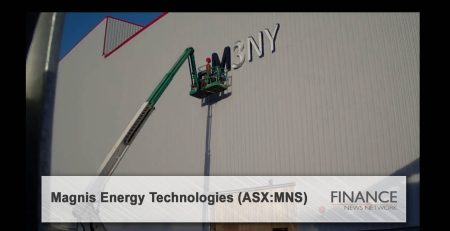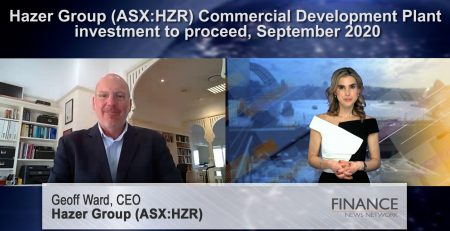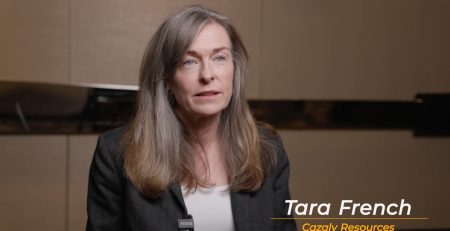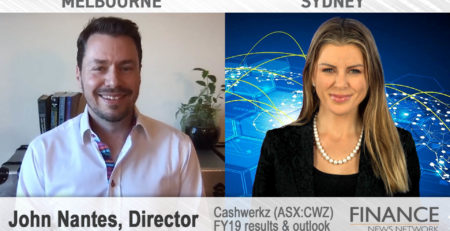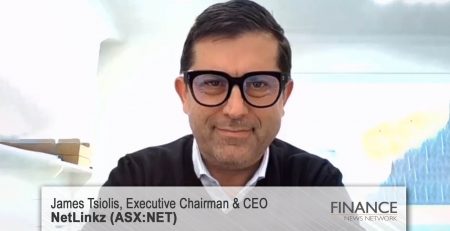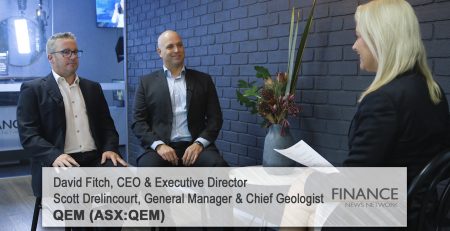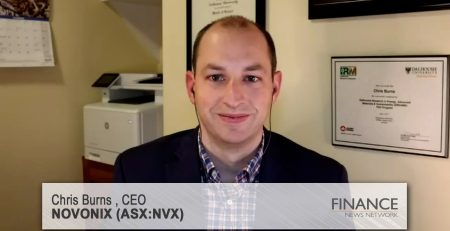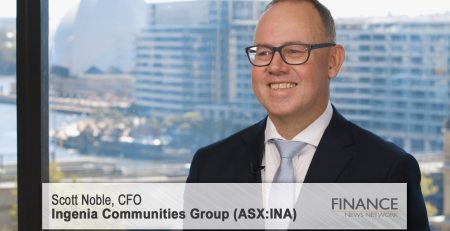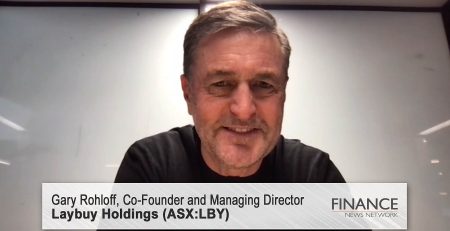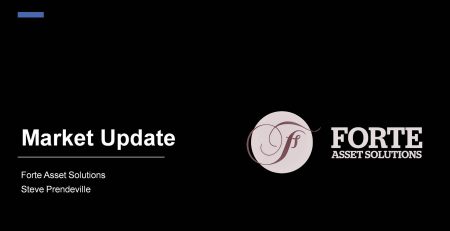Lake Resources (ASX:LKE) – clean, direct extraction, high-purity lithium developer
Lake Resources Limited (ASX:LKE) Managing Director Steve Promnitz provides an update on the company's lithium brine projects in the lithium triangle of Argentina, and on its financials and strategy.
Rachael Jones: Hello. I'm Rachael Jones for the Finance News Network. Joining me from Lake Resources (ASX:LKE) is Managing Director Steve Promnitz. Steve, welcome back to FNN.
Steve Promnitz: Thank you very much for the opportunity.
Rachael Jones: Now, just as a reminder for our viewers, could you start by giving us an introduction to the company?
Steve Promnitz: So, Lake Resources works in the battery material supply chain. We are aiming to provide lithium into the batteries that power this mobility revolution, mainly with electric vehicles. The key difference with Lake Resources is we’re using a clean technology, a known water processing method, to produce a very high purity lithium, and doing that in a more responsibly sourced and sustainable way that has a major ESG benefit.
Rachael Jones: Now, Steve, the lithium sector appears to be on a much better footing now. Is that a fair assessment?
Steve Promnitz: Absolutely. So, the macro story's intact. We're seeing electric vehicles expanding around the globe — recently with the EU with incentives, now with the US under the Biden administration. We also saw a major uplift in the number of battery mega factories. They went from 70 to 181 just last calendar year. And now, November, December, we saw a slight uplift, January a 40 per cent spike in the spot price for lithium. So, all the lithium stocks are up, including Lake Resources.
Rachael Jones: And what can you tell me about the direct extraction method?
Steve Promnitz: So, it's very simply a water processing method. It's actually not that complicated. The world's been using it for nearly 70 years. It's called ion exchange. What is new is that our technology partner, Lilac Solutions, has adapted it for lithium. And so, what that does is there's a little bead, it's about half the size of a rice grain. It actually bonds onto the lithium that's dissolved in salty water underneath these salt lakes. And in doing so, we extract the lithium straight out of the water. That allows us to leave or return all the rest of that brine, which is about 99 per cent of it, back to its source. And because you only take the lithium out, you actually produce a very high-quality product. Elegantly simple, able to operate at room temperature. And the reason that it hasn't been done before is there really wasn't a need to do so. We go back five years ago, only 10 or 15 per cent of lithium went into batteries. Now, that's more than 60 per cent, and the number's rising. And the demand with the technology is to get a better-quality product.
Rachael Jones: Now, let's talk about your project, Steve. Can you tell us more, starting with the Kachi lithium brine project?
Steve Promnitz: We recently completed a capital rising in January, and that now funds us straight through the next 18 months, which is a definitive feasibility study, and all the related environmental social studies or what have you, so that we can be in a position for construction finance discussions by this time next year. So that's on the Kachi project.
Olaroz and Cauchari, we drilled those in 2019 and demonstrated that we had exactly the same brines as our next-door neighbors. We're pretty much the only junior adjacent to Olaroz that's in production with Orocobre, and with Cauchari — that's going into production this year — with Lithium Americas and Ganfeng, one of the big five.
Rachael Jones: Now, to your financials and strategy. Can you provide us with a snapshot?
Steve Promnitz: First of all, on the corporate side, we've got a thousand million shares on issue, a billion shares. That sounds like a lot. A market value of between $300 and $400 million Australian, between $20 to $25 million in the bank. And able to be funded through this next 18 to 24 months — we're targeting 18 months — to have everything ready for the construction finance. And, in that time, you're going to see us announce discussions with downstream partners. And also with the project finances, we've been in some initial discussions to source a large portion of the $540 million capex required, and we'll have more to say about that soon. So, we're actually reasonably well-placed and I think much better placed soon. And on top of that, we've now got institutional support on our register, from Australia, the US and the UK, EU.
And so, our strategy, if we look forward two years’ time, will be in construction. On the Kachi project, we'll probably be looking at expanding that from 25 to 50,000 tons. And, most likely, we'll be working with someone else on developing the Cauchari/Olaroz project. So we could become a major company in this space. And that's because of this ESG and quality benefit. Funds around the world now have put money towards ESG space. There aren't many companies that actually can tick those boxes. We're one of them. So I think you're going to see a significant amount of uplift there as well.
Rachael Jones: Steve Promnitz. Thanks so much for the update. Always good to see you.
Steve Promnitz: Cheers.
Ends
Copyright 2021 – Finance News Network
Source: Finance News Network

